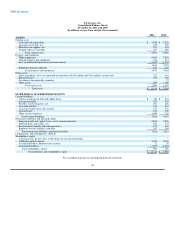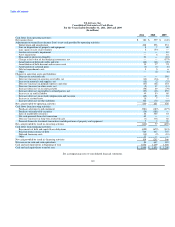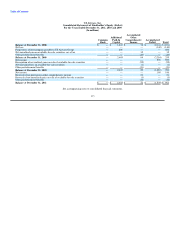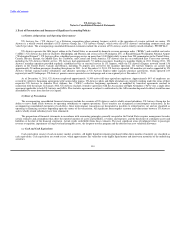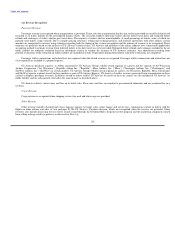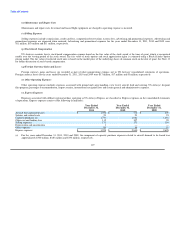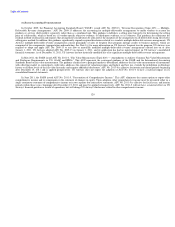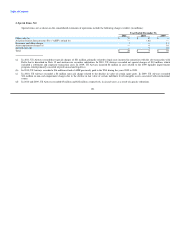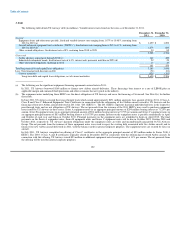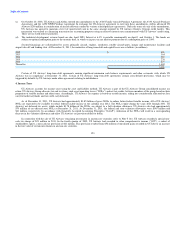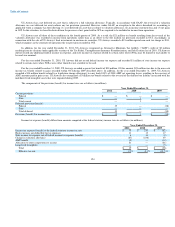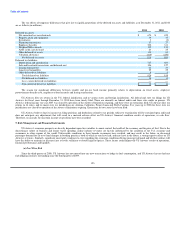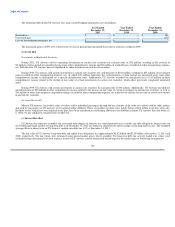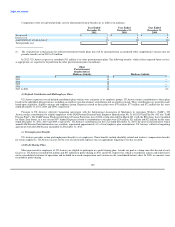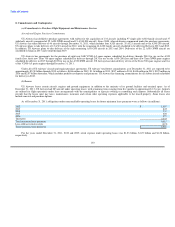US Airways 2011 Annual Report Download - page 123
Download and view the complete annual report
Please find page 123 of the 2011 US Airways annual report below. You can navigate through the pages in the report by either clicking on the pages listed below, or by using the keyword search tool below to find specific information within the annual report.
Table of Contents
(t) Recent Accounting Pronouncements
In October 2009, the Financial Accounting Standards Board ("FASB") issued ASU No. 2009-13, "Revenue Recognition (Topic 605) — Multiple-
Deliverable Revenue Arrangements." ASU No. 2009-13 addresses the accounting for multiple-deliverable arrangements to enable vendors to account for
products or services (deliverables) separately rather than as a combined unit. This guidance establishes a selling price hierarchy for determining the selling
price of a deliverable, which is based on: (a) vendor-specific objective evidence; (b) third-party evidence; or (c) estimates. This guidance also eliminates the
residual method of allocation and requires that arrangement consideration be allocated at the inception of the arrangement to all deliverables using the relative
selling price method. In addition, this guidance significantly expands required disclosures related to a vendor's multiple-deliverable revenue arrangements. US
Airways' multiple-deliverable revenue arrangements consist principally of sales of frequent flyer program mileage credits to business partners, which are
comprised of two components, transportation and marketing. See Note 1(j) for more information on US Airways' frequent traveler program. US Airways was
required to adopt and apply ASU No. 2009-13 to any new or materially modified multiple-deliverable revenue arrangements entered into on or after
January 1, 2011. US Airways adopted ASU No. 2009-13 on January 1, 2011, and its application has had no material impact on US Airways' consolidated
financial statements. As of December 31, 2011, US Airways had not materially modified any of its significant multiple-deliverable revenue arrangements.
In May 2011, the FASB issued ASU No. 2011-4, "Fair Value Measurement (Topic 820) — Amendments to Achieve Common Fair Value Measurement
and Disclosure Requirements in U.S. GAAP and IFRSs." This ASU represents the converged guidance of the FASB and the International Accounting
Standards Board on fair value measurement. The guidance clarifies how a principal market is determined, addresses the fair value measurement of instruments
with offsetting market or counterparty credit risks, addresses the concept of valuation premise and highest and best use, extends the prohibition on blockage
factors to all three levels of the fair value hierarchy and requires additional disclosures. ASU No. 2011-4 is effective for interim and annual periods beginning
after December 15, 2011 and is applied prospectively. US Airways does not expect the adoption of ASU No. 2011-4 to have a material impact on its
consolidated financial statements.
In June 2011, the FASB issued ASU No. 2011-5, "Presentation of Comprehensive Income." This ASU eliminates the current option to report other
comprehensive income and its components in the statement of changes in equity. Upon adoption, other comprehensive income must be presented either in a
single continuous statement of comprehensive income or in two separate but consecutive statements. ASU No. 2011-5 is effective for fiscal years, and interim
periods within those years, beginning after December 15, 2011 and must be applied retrospectively. ASU No. 2011-5 will not have a material effect on US
Airways' financial position or results of operations, but will change US Airways' disclosures related to other comprehensive income.
120



